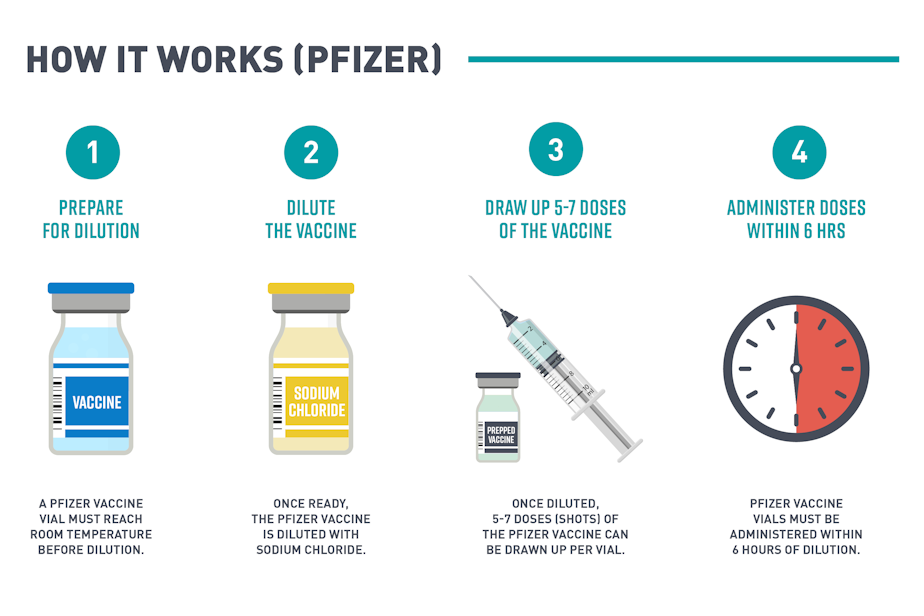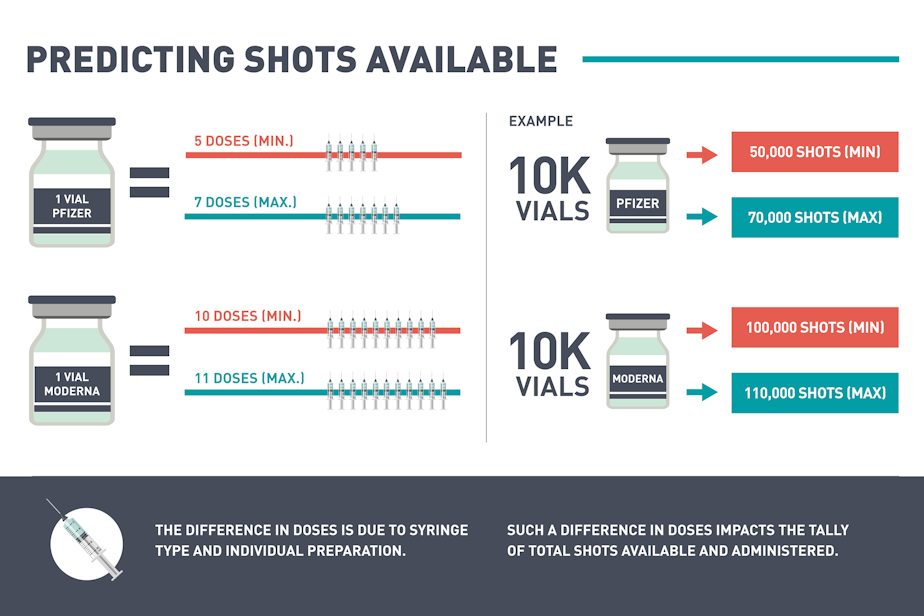1 million Covid vaccines sit in freezers as Covid rates climb in Washington state

State health officials say the major sticking point in the vaccine rollout is supply: How many doses the federal government has sent to Washington.
“The biggest challenge that we have is vaccine supply,” Dr. Umair Shah, state health secretary, said last Wednesday. “We can’t do much about that.”
But what about the doses here already — that haven’t been given to the millions of Washington state residents yet to get a single shot? At least 1 million doses of the coronavirus vaccine have been delivered to providers in Washington state but never reported as having been given to a patient.
One million is if you count how the Department of Health counts. The actual number of missing doses is probably closer to 1.7 million, if you tally the doses that are actually in each vial.
Where are these doses? Likely sitting in freezers across the state.
Meanwhile, Covid cases are climbing. Governor Jay Inslee said on April 22 that the state is at the beginning of a fourth wave of infections, with more contagious variants of the virus spreading. Vaccination is one of the best tools the state has to slow the spread of the virus and prevent severe disease.
SheAnne Allen, who is in charge of the state’s vaccine rollout, said they know doses are out there. “We do know there’s inventory sitting on providers’ shelves,” she said.
These aren’t “wasted” doses — doses that providers failed to extract from a vial, or doses that had been out of the freezer for too long and had to be tossed. In a media briefing in late March, the state Department of Health told reporters that fewer than 4,000 doses had been wasted in the state since the start of the vaccination campaign.
Sponsored
There are also doses that have been given to patients but haven’t been entered into the system yet. Other doses are booster shots waiting to be administered. Together, these account for about 550,000 doses.
So, according to the state, that leaves about half a million doses that are wholly unaccounted for. But the state hasn’t been counting all the doses in every vial. If they did, they would find more than a million Covid vaccine doses sitting in freezers across Washington state.
Providers aren’t supposed to stash vaccines. The state Department of Health says that it asks vaccine providers to administer 95 percent of the doses they get the week they get them. If not, in theory, their next shipment of vaccine doses could get reduced, or even cancelled.
But, in practice, no one’s making sure that providers actually use every dose they receive. It’s more of an honor system.
“People shouldn’t be ordering vaccine if they’ve got vaccine left over,” said Cassie Sauer, CEO of the Washington State Hospital Association, in a press briefing. If providers have appointments they’re not filling, she said, “they should pause their [vaccine] ordering for a week and then reorder the next week.”
Sponsored
Afton May, director of quality for Mid-Valley Hospital in Omak, agreed that the state health department “is letting us make those decisions [about how many vaccines to order each week].”
“We’re really trying hard to be good stewards,” May said. “We don’t have vaccines sitting around.”
Even one of the state’s own mass vaccination sites has fallen behind. In March, the Wenatchee site administered just 70 percent of the vaccine doses it received. (That shortfall would not account for the state’s many missing doses.)
Allen, with the state Department of Health, said the state initially looked at which providers hadn’t complied with the weekly 95 percent requirement. She found that it was the same providers that either weren’t getting doses off their shelves or weren’t reporting them properly to the state, so she switched to a more informal process.
“I’m looking at the list in general of just inventory and providers, and I scan that list to say, like, ‘Oh, gosh, this clinic — they have 1,000 doses on hand, but I know that their weekly administration is only typically about 100,’” Allen said. “Let’s either move those vaccines somewhere else, where we’ll see them administered quickly, or find out what’s going on.”
Sponsored
Allen said they are “working with providers and reaching out and finding out what’s going on.”
“One provider might want to be holding a mass vax clinic,” she said. “They’re only allocated 100 doses a week. They need to build inventory one, two, three, four weeks … to where it makes sense to hold a mass vax.”
Allen said that using 95 percent of the state’s vaccines every week is a “high expectation,” and that providers giving 85 percent of the shots consistently “is, I think, something to celebrate.”
“Keep up this amazing work,” she said she tells providers. “We know that there are going to be bumps on the road.”
Jen Coiteux, also with the Department of Health, said that enforcing the requirement more strictly could hurt the state’s efforts to distribute vaccines equitably, since, she said, reaching out to historically underserved communities can take time. But she offered no concrete examples of times that reaching out to underserved communities explained a given provider’s large unused vaccine stash.
Sponsored
The state’s claim that providers are consistently administering 85 percent of the vaccine doses they receive every week is an overestimate. If they counted the doses actually in each vaccine vial, that number drops to 75 percent.

Here’s why: Every vial of Pfizer vaccine contains 5, 6, or 7 doses, depending on how it’s mixed, and what syringe is used. Moderna vials contain 10 or 11 doses. Before mid-February, Washington counted every Pfizer vial it received as 5 doses. Then it started counting them as 6. For the most part, it’s not keeping track of how many doses are actually coming out of each vial.

In one example, a provider who received 50 vials of Moderna vaccines — so, in theory, 500 doses — managed to extract 539 doses from those vials. If other providers have had similar success, then the number of missing doses is likely closer to 1,000,000 than 400,000.
Sponsored
Both Public Health Seattle King County and the Washington State Hospital Association report that providers have consistently had the necessary syringes to extract as many vaccine doses as possible from every vial.
Allen said it’s “too difficult to tell” how many doses there really are in the state, so it makes her “nervous” to talk about the additional missing doses.
This week, some of the pressure in the Seattle area has eased up, as the state delivered a record number of doses to the city’s mass vaccination sites.
But every vaccine sitting idle in a freezer is a missed opportunity.
“Every person vaccinated is one more case, hospitalization or death prevented,” King County public health officer Dr. Jeff Duchin said on April 23.
“Each week, the stakes are higher as our outbreak continues to gain momentum,” he added. “By getting more people vaccinated, the entire community will be better protected.”
Note: The state Department of Health reports that it has delivered 5,820,340 vaccine doses to providers (that includes doses delivered through the long-term care facility program and also the federal pharmacy program). However, if providers managed to extract 7 doses from every Pfizer vial and 11 doses from every Moderna vial, the true number of doses providers have received could be as high as 6,499,460.
That number takes the long-term care facility and federal pharmacy doses at face value and only accounts for extra doses in the vials delivered through the state allocation process, because the state was unable to say exactly how many vials of each kind of vaccine were delivered to the state through the federal pharmacy program.





